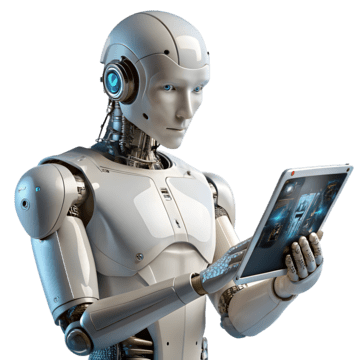
The Robotics Programming and AI Certified Course is designed to provide a comprehensive understanding of robotics systems, programming, and artificial intelligence applications. This course blends theoretical foundations with hands-on experience in developing autonomous systems, robotic control, and AI-driven decision-making. Participants will explore essential concepts such as robot kinematics, sensor integration, path planning, machine learning, and computer vision, using industry-relevant tools and platforms like ROS (Robot Operating System), Python, Tensor Flow, and OpenCV.
Module 1: Introduction to Robotics & AI Fundamentals of robotics and artificial intelligence Components of a robotic system Types of robots and their applications Basics of robot autonomy and intelligence.
Module 2: Programming for Robotics Introduction to Python and C++ for robotics Data structures, functions, and control structures Real-time programming concepts Hardware interfacing basics.
Module 3: Embedded Systems & Microcontroller Programming Arduino and Raspberry Pi architecture GPIO programming Sensor integration and data acquisition Actuator control and real-world interfacing.
Module 4: Robot Kinematics and Dynamics Forward and inverse kinematics Trajectory generation Dynamics of robotic arms and mobile robots Simulation of robotic motion.
Module 5: Robot Operating System (ROS) ROS installation and core concepts (nodes, topics, services) Creating custom packages ROS with Gazebo simulator Launch files and real-time control
Module 6: Sensors, Actuators, and Hardware Integration Types of sensors (IR, ultrasonic, LIDAR, IMU, etc.) Motor control (servo, DC, and stepper motors Feedback systems and PID control Sensor fusion techniques.
Module 7: Artificial Intelligence for Robotics Basics of machine learning and AI Supervised and unsupervised learning algorithms Decision-making and rule-based systems Reinforcement learning basics.
Module 8: Computer Vision in Robotics Introduction to OpenCV Image filtering, edge detection, object recognition Face and gesture detection Visual tracking and SLAM (Simultaneous Localization and Mapping).
Module 9: Path Planning and Autonomous Navigation Mapping and localization techniques Path planning algorithms (Dijkstra, A*, RRT) Obstacle detection and avoidance Integration of vision with navigation.
Module 10: Capstone Project & Industry Applications Design and development of an end-to-end robotics project Applications in manufacturing, healthcare, agriculture, and defense Project presentation and documentation Industry trends and future of AI in robotics.
Mobile: 9100348679
Email: coursedivine@gmail.com

You cannot copy content of this page